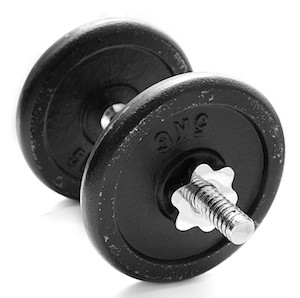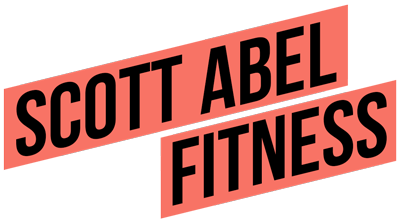 I’m getting crotchety in my old age.
I’m getting crotchety in my old age.
I continue to be amazed and disappointed by what people are NOT learning in so-called certification courses. It’s amazing to me that you come out of these courses understanding little if anything useful about the concepts of strength and power.
You cannot possibly be effective as a trainer or fitness Coach, or even as a trainee, without a working knowledge of strength and power, not just conceptually, but in in-depth application as well.
For instance did you know: “power”lifting is actually a sport that tests strength – and “weight”lifting is actually a sport that tests power?
Yet if you ask a group of freshly certified “trainers” what these particular sports “measure and test” most will get the answers wrong! (I know because I pose the question at all my seminars)
Truths like this about the sports of powerlifting and weightlifting make understanding the concepts of strength and power even more confusing for those of you trying to get past the way these terms are bandied about in the gym and elsewhere.
If you don’t truly understand these terms at their basic level, then you can’t possibly understand all their variations and nuances as well. So in reality the sport of powerlifting is more about testing limit strength than is about testing “power.” Powerlifting is about moving heavy maximum weights, and moving heavy maximum weights can only be done “slowly.” No one ever moved a grand piano “quickly.” And “weightlifting” on the other hand, as a sport, is about moving moderate weights “quickly” (moderate compared to 1RM limit strength)
Therefore according to the concepts to be discussed below in this article… the sport of “powerlifting” is really more about strength and the sport of “weightlifting” is really more about power!
To reiterate, powerlifting is all about measuring “being strong” while weightlifting is all about measuring being “powerful.” These are the true definitions of these words and these sports as principles and concepts of exercise physiology.
What is strength? Answer: the ability to exert force. This is basic ‘fitness certification answer’ 101.
But when I ask a “certified personal trainer” to tell me the kinds of “strength” that exist and how they are relevant to training application, usually all I get back is a blank stare.
Anaerobic strength, aerobic strength, speed strength, starting strength, explosive strength, linear and non-linear strength expression, concentric strength, eccentric strength, static strength. Are you with me so far? And what about the concept of power? Do you know and understand the relevance of ATP and ATP/CP, and glycolytic and oxidative energy systems contributions to various forms of strength and power? Do you know anything about muscle fiber types: Type 2a and Type 2b (the white/fast twitch fibers) and Type 1 (the red/slow twitch fibers). Does it even matter that you know this or not as you put a client through a workout, or train yourself?
I guess the answer to that question lays in how good you want to be, and if you really want to “know” fitness and “be” a “real” expert, or you want to play one in the gym or online. I can’t believe the number of gym floor trainers that to this day I overhear them talking to each other or to clients and they are confusing power with strength and strength with power. To me this is akin to being a driving instructor and not knowing the difference between the gas pedal and the brake pedal and pretending it doesn’t matter.
So let’s narrow this down a bit and allow me to talk about “strength” and “power” here. Hopefully by the end of this article you will have a better grasp on these concepts than just using them “interchangeably” as ‘sort of’ one and the same.
The slower movements of maximum efforts under maximum loads rely on what is called “absolute strength” (keep that word “slower” in mind). When you hear the question, “how much do you bench?” that question is about “absolute strength.” The definition usually used for absolute strength is “the ability to generate force at MAXIMUM capacity, in a given position and context.”
But quick/fast lifts with a velocity component are different.
Lifting quickly demands the ability to apply maximum power at exactly the right time at exactly the right place in a given kinetic chain of motion or strength expression. These are two distinct “skills” if you will: producing different types of training ‘stress’ and therefore two different types of adaptive response. So, maximum 1RM strength expression and power expression are two different things, although they are in a relationship. They are married, in a way.
But we have an inconsistency and contradiction here already which I will explain in a second: What is important is that you have to recognize the difference between “force production –> strength” and “explosive lifting –> power.” This is fundamental to any basic understanding of resistance training and therefore program design.
An Example of “Mistakes” at the Highest Level of Expertise
Given what I said above you would think experts in the field would apply these things correctly when wanting to measure or test “strength” and “power.” But they don’t always get it right. Take the amateur scouting combines for instance – particularly in the NFL in this example. Using fancy formulas players are now tested in the bench press at 225 lbs. as a measure of “maximum strength.” That is, they get the player on a bench, load up 225 lbs, and see how many reps they can do. Then they call this “strength.”
But even with these formulas used to translate max reps at 225 lbs. into a measure of “absolute strength” — if you watch those athletes being tested, with many of them getting 30+ reps, what you witness is an “actual” expression of power, because so much speed and velocity is involved.
Compare a football athlete doing 225 lbs. bench presses for reps with watching a powerlifter go for a max bench press attempt in a competition. To say you're testing the same thing is nonsense.
This example of bench press contradicts the definition of absolute strength mentioned above: The slower movements of maximum efforts under maximum loads. Well 225 lbs. is NOT a maximum load for so many trainees being tested “for strength” in the bench press. And when each rep is executed with speed and velocity because it so much lighter than a “max load,” well these testers are now “violating” actually testing for “maximum strength” no matter what kind of fancy formula is employed!
Now, to be fair, the NFL and other organizations adapted this test because too many players were tearing muscles and getting injured training for max load strength in the bench press. By itself, not a bad decision. But to claim doing max reps bench presses at 225 lbs. can measure absolute strength is a leap in logic that doesn’t hold water, especially when you visually witness the “speed of execution” of these higher reps supposedly testing “for strength.” Not many experts may be with me on this one – but it is to my mind a colossal mistake to call the 225 lbs. bench press a test of maximum strength prediction when the reps are executed with such speed and velocity, and well beyond what is considered within the realm of “max strength repetitions.”
Formulas cannot account for this contradiction – no matter how much everyone wants to believe in them.
Understanding “power” is about understanding the ability to exert force quickly. As in the “marriage” I mentioned above between strength and power – you could say power is reliant on strength – it is a specific ‘expression’ of strength, if you will. Power requires velocity, or at least the “intention” of velocity.
Strength movements and exercises are those that are limited in testing by strength itself – as in force production – so in terms of “traditional” strength exercises we tend to think in terms of the bench press, the squat, the deadlift and maybe the overhead press.
Power movements or exercises on the other hand are those exercises that are determined in testing by a limitation in power output, as in velocity generation. So in terms of “traditional” power exercises in athletics we tend to think in terms of the snatch, and its variations, the clean and its variations, the clean and jerk, the jerk press, the vertical jump etc.
Fancy Equations
Most certified trainers like to parrot back the power equation as S X’s D ÷ T. As in Strength X’s Distance Divided by Time.
But explosive “strength” is a much simpler formula of F ÷ T = Explosive. That is, “Strength” – explosive “strength” is force divided by time. It can also be “expressed” on the strength-curve graph as explosive “strength” is measured by how long it takes to get to maximum force output.
But I digress.
Looking at the exercises specifically, the power clean, used pretty much globally in athletics training, is a “power-based” exercise because of its obvious velocity component. As Mark Rippetoe correctly points out, “the power clean is simply a deadlift that accelerates into a jump after which the force X’s acceleration requires catching/racking the bar on the shoulders.”
Strength and power – power and strength. These have a back and forth relationship. As components of “power expression” we can define two kinds of strength that contribute to power.
- starting strength -> maximum instantaneous fiber recruitment (think of a flashbulb going off)
- explosive strength -> the ability to use these fibers until they are no longer needed, while still being able to recruit more if needed (think of turning on a light switch that also has a dimmer knob that allows you to then make it even brighter)
If you understand these definitions above then you'll understand that “plyometrics” is training designed to improve “starting” strength, as a component of power.
To understand these basic elements of strength and power is to put yourself well ahead of the pack when it comes to program design and effective workout implementation. Or you can continue to be a gym-floor personal trainer never understanding that “a collection of exercises does not necessarily equal an effective workout, and “a collection of workouts does not necessarily equal an effective program!”
More detailed discussion of these basic elements and concepts is in my book ‘The Abel Approach: Program Design and Coaching Strategies in the New Era’
